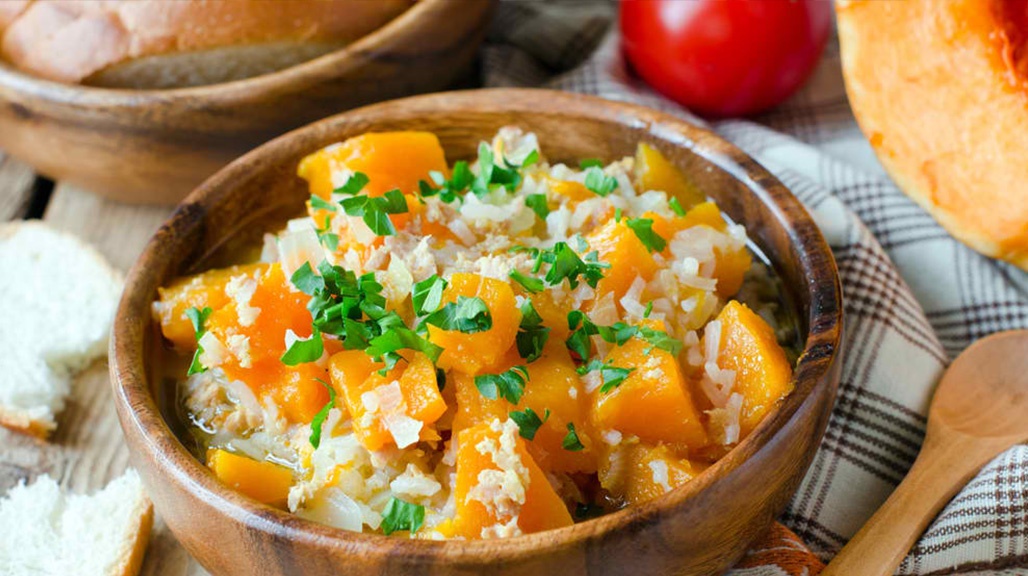Tri-Colour Pumpkin Risotto: How To Make This Yummy Meatless Monday Dish
 Contributed by
Liza Rowan
November 14, 2016
Contributed by
Liza Rowan
November 14, 2016

For as long as I can remember, tri-colour pumpkin risotto has been my kids’ favourite ‘Meatless Monday’ dish.
I’m not sure whether it’s the creaminess of the rice, or just the simplicity of the dish at the end of a busy first day back at school after the weekend.
I usually use brown risotto (Arborio) rice, but brown rice works just as well. Soaking the rice for a number of hours reduces the cooking time and phytic acid levels – reducing the latter enables for better absorption of nutrients in the rice and for better digestion.
Ingredients (Serves 4):
- 5 cups soaked brown risotto rice
- 2 tbsp butter
- 2 cloves garlic, minced
- ½ onion, finely chopped
- ½ cup pumpkin, finely diced
- 1 litre chicken or vegetable stock
- ½ cup sweet corn kernels
- ½ cup long beans or peas – thawed, if frozen
- Grated parmesan
- Salt & pepper
Directions:
1. Heat butter over medium heat in medium size pot
2. Saute garlic for a minute, add onions for another minute, and diced pumpkin – sauté for 3 minutes
3. Add dried Arborio rice ¼ cup at a time, and stir into sautéed mixture
4. Add ½ cup of stock and stir mixture gently
5. Once stock has been absorbed, add another ½ cup stock (have magazine to hand, or get kids to stir supervised..)
6. Repeat step 5 until stock has been absorbed
7. Stir in sweet corn, peas, and parmesan cheese
8. Add salt & pepper to taste
Nutrition Notes:
Pumpkins are part of the winter squash family, closely related to butternut, acorn, and other squash. With their rich orange colour, they are high in carotenes (from vitamin A) making them an effective antioxidant – supporting skin and eye health. Pumpkins are also high in vitamin C and fiber, and are a good source of minerals, including manganese and potassium. With their natural sweet flavour, pumpkins are great in sweet as well as savory dishes, including cakes, sweet sauces, and desserts.
Brown rice is preferred over polished white rice as it retains many of its nutrients in the bran and germ layer – it is therefore higher in fibre, some animo acids (building blocks of protein), manganese, and other nutrients. It contains less carbohydrates and sugars, so is therefore recommended to help keep blood sugar levels under control. Soaking helps digestibility and reduces cooking time.
Garlic has many benefits due to its many sulphur-containing compounds (phytonutrient) – these include protection against heart disease, infections, and against some cancers. Use crushed fresh garlic in dips, marinades, and to add flavour to most savory dishes.
Would you like to learn more about sugar and understanding nutrition labels?
Join our 5 Weeks Nutrition Program Revitalize-in-5! Click here
Visit the Health & Vitality page to find out more about Liza's business.
This article was originally published on health & vitality blog and has been reposted on Executive Lifestyle with the permission of the author.
Edited by Michelle Sarthou
Image credit: Shutterstock
Did you enjoy this post? Please comment, like and share!











Sorry, the comment form is closed at this time.